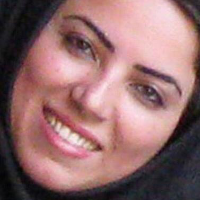Study of rural community resilience against earthquake (Case study: kuaick Rural Complex, in Sarpol-e- Zahab)
Earthquake experience in Iran has shownthat due to the location of settlements in the country, regardless of the seismicity of the environment, worn texture and low durability of the village, the unpreparedness of the villagers in facing it, low level of use of technology, etc. In such event consequently, destruction and other human and financial losses would come true. Today, governments adopt a variety of strategies to reduce the effects of natural hazards. One of these approaches is resilience to natural hazards. Resilience is a way to strengthen societies by using their capacities and different definitions, approaches, indicators and measurement models have been formed about it. Resilience is the concept that a local community can withstand severe natural disasters without being harmed by destructive casualties and loss of productivity or quality of life, and receive a great deal of help from outside the community. Kuaick Rural Complex was one of the villages that was completely destroyed in November 2017 in Sarpol-e Zahab earthquake due to its non-standard and weak structure and body. 78 residents of this village died in the earthquake. One of the objectives of this research is to know how to respond, retrieve and reconstruct this village, which has gained a favorable experience based on social resilience and benefits from cultural and social capital.
The present study is a qualitative research and a field study. This method has mostly done through in-depth semi-structured observation and interviews. In this research, the researcher has directly and interactively discussed and observed the affected individuals and groups. In this study, 25 interviews were conducted with heterogeneous sampling and with maximum variety to achieve conceptual saturation. By comparing these interviews with each other, the study of resilience and its dimensions and the impact of social and cultural capital on the degree of resilience in rural society have been studied.
The findings of this study have indicated that resilience from a physical-environmental perspective after the earthquake in this village is considered desirable due to the benefit of social capital and cultural symbolism. In terms of "economic resilience", society's capacity to return to pre-accident economic conditions and society's capacity to reduce future exposure have not been favorable, but people of Kuaick Rural Complex, despite highest rate of damage among the earthquake-stricken villages of Sarpol-e-Zahab, have had a very significant social resilience, which has a direct impact on increasing physical, environmental, economic and institutional resilience. This village has highly taken advantages of social resilience which is relied on social capital as well as symbolic resilience. Since the feature of many rural communities is the presence of social and symbolic capital in times of crisis, the use of these features to reduce vulnerability is emphasized.
Today, resilience analysis of human settlements has become an important and influential field. Accordingly, the analysis and increase of resilience against risks in order to achieve the goals of sustainable development is of particular importance. According to the process of resilience analysis, Kuaick Rural Complex can be considered a society with good resilience, the most important reason is the impact of social indicators on resilience. In our country, according to anthropological characteristics and recent research findings, the most effective component in increasing resilience is the dimension of social capital and symbolic capital, which makes the situation of social resilience more favorable compared to other dimensions of resilience.
- حق عضویت دریافتی صرف حمایت از نشریات عضو و نگهداری، تکمیل و توسعه مگیران میشود.
- پرداخت حق اشتراک و دانلود مقالات اجازه بازنشر آن در سایر رسانههای چاپی و دیجیتال را به کاربر نمیدهد.





